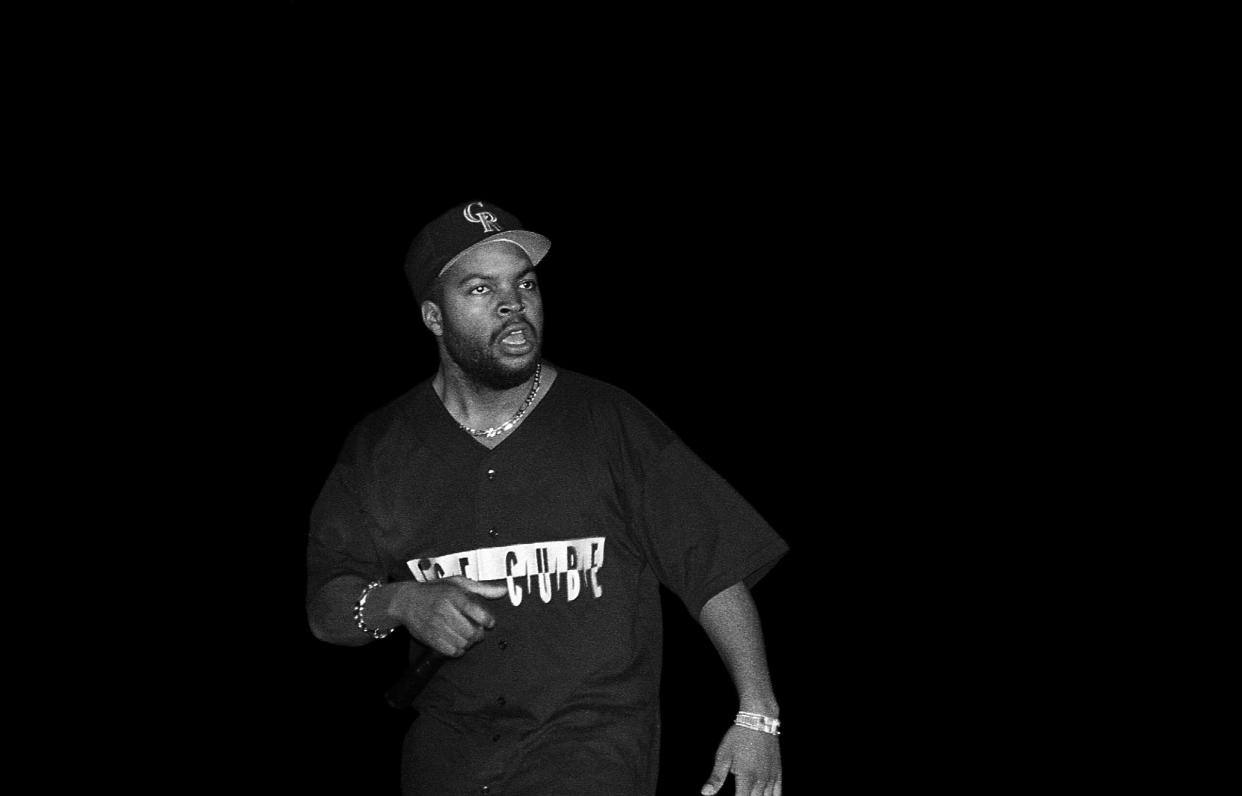Our 1993 Hip-Hop Culture Feature: Dreaming America

This article originally appeared in the August 1993 issue of SPIN.
The music is my life.
More from Spin:
Is New York, New York, really the birthplace of hip hop? Is this ultimate city—the preferred setting for most modern-day film fables —the place where the seed took hold? Where the rhymes first flowed and a culture took form? This compressed, dirty place, this mainstream cultural stronghold, is the steamy-hot/snowy region where a generation found an identity, where all the shit went down?
It’s where DJ Scott LaRock died and Slick Rick went to prison. Where Run found Christ and Griff got dismissed. Where sneakers became the rule and not the exception; where Latifah grew Treach, and where the Guru squoze hip hop out of Bird’s horn.
And here she is, Ms. Hip Hop, generic girl-fan. In that place. The city. Looking around for the elusive ticket, the line, the string that tied it all together and turned the music into a thing, a movement—a music.
She is a native Californian in New York for the third time. She never stays long. She always flies back West, over the mountains and the lakes, relieved when she sees Lake Tahoe, ecstatic when she spots the Golden Gate Bridge, its yawning red span as welcoming as a familiar mouth upturned in a smile. Then she knows she is in California, a subdivision of the U.S.A. as long and thin as she would like to be—a huge state broken up into sprawling counties, the seductively warm state she calls her home. California has its glories, and it holds on tight to its trophies—the Eagles, Sly and the Family Stone, Jefferson Airplane, Tower of Power. But as grand and forthright as Cali hip hop is circa 1993—the Coup, Snoop Dogg, Souls of Mischief —in the East lay the lungs and heart of hip hop and so the West holds court in its long shadow.
Tommy Boy president Monica Lynch asked, “Has New York fallen the fuck off?” a long time ago, like maybe it would jar East Coast B-boys and -girls into action. But to no avail. The cast pumps hip hop blood, but out West are the sinewy appendages, out West is where folks are walking and talking it.
New York beckons, though, like an old buddy with gossip, like a preacher who just might know the Truth. The buildings are older, the street fumes stronger, every other car is a taxi. The periodicals seem vital, seem to have more than a tenuous connection to the city. The trains hiss and moan and chug. The place is cutthroat, envious, and mean. Pleasantries are hoarded like money and doled out without enthusiasm. California is one big country town compared with Manhattan and the surrounding boroughs. California piles on big-city makeup in L.A. and Oakland, San Diego and San Francisco— but really, the place is spread out like a big cabbage farm, like the far-flung desert it is.
But cabbage farm or no, in urban southern California, even a mostly middle-class Catholic schoolgirl like Ms. Hip Hop knows which neighborhood is blue and which is red. She knows when to hit the asphalt in the parking lot of Shakey’s or Astro Burger because boys are shooting bullets in the air or at certain cars because their varsity hoop squad lost. Or because they won.
She remembers when “urban” didn’t have a negative connotation, when urban meant of or having to do with a city or a metropolis. She remembers when “city” didn’t mean dank and dark and poor. She vaguely recalls when Black people weren’t automatically associated with cities and urbanity. She’s read about it, about when African-Americans lived mostly on farms and in the “country” and in the South. Arrested Development’s Speech reminisces about that era in “Tennessee.” Making myth of the post-sharecropping era and country life, he talks convincingly, painfully about climbing the trees his forefathers hung from. It sounds so cleansing and sad and fine. Just as American Black people are automatically associated with cities and all of their ills, Speech wants the old life, the old values, the old ways—back to the earth. To being “natural.” As if that state—”naturalness”—is an option at this point in Western civilization.
The Catholic schoolgirl, the smart hip hop girl—she is ever anxious for peace for her people and her own state of mind. She wildly reaches for this “oldness,” this better way of being. But even as a mindset, while she stands on the streets of New York or West Los Angeles or Fresno or Kettleman or Napa, California—it doesn’t work. Images of wooden porches and backyard cornstalks, of roosters pecking and kente cloth flowing, the brightly painted pictures in her desperate imagination fade like a mirage in an old cartoon: quickly and completely. In its place are frowns and guns, televisions and straightened hair, housing projects and stucco single-family homes. Fast cars and loud music. Hip hop. MC Breed and Too $hort. Onyx and Ice Cube.
Still she looks for hip hop’s heart in New York City, believing she can find it, thinking naively that if she sees it, she could define it and the definition would make a difference in all that she sees, in all that her mind conjures and remembers. So she presses on.
To see our running list of the top 100 greatest rock stars of all time, click here.
The post Grandmaster Flash & The Blondie Effect appeared first on SPIN.

